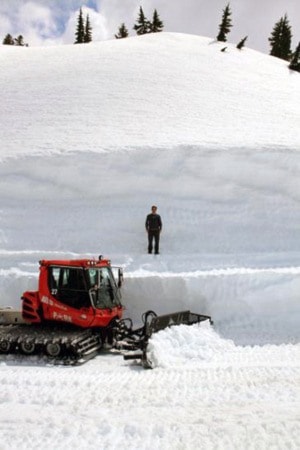For some, a dream job would be a vacation planner — for themselves!
Vacationing in B.C. can take so many forms that it would indeed be a full-time job.
The tourism and hospitality industry is an extremely diverse industry with over 400 different occupations — including occupations that lead to longer-term careers, as well as those that fit well for those seeking part-time work, like students or older workers who are not yet ready to retire.
British Columbia’s tourism industry will be a leader in provincial job growth as businesses look to fill 101,000 new job openings by 2020, according to a study of labour demand and supply by go2, the BC tourism industry’s human resource association.
The Tourism Labour Market Strategy, released in the spring of 2012 by go2, sets out the plan to recruit, retain and train the workers needed to keep pace with the growth projected for the industry.
Nearly half of the 101,000 openings will be new jobs created by the tourism industry across the province, adding 44,220 more jobs to the provincial workforce by 2020. The other approximately 57,000 openings are due to replacements (i.e. retirements).
“The labour strategy co-ordinated by go2 is a key pillar of industry growth in the province. Without it, we simply wouldn’t have the skilled workers in place to deliver the visitor experience throughout B.C.,” says Lana Denoni, chair of TIABC, the Tourism Industry Association of British Columbia.
B.C.'s location, bordered by the Rocky Mountains on the east and the Pacific Ocean on the west, makes it unique within Canada. Its mountain and coastal scenery, opportunities for summer sailing, winter skiing, and other activities such as fishing or sightseeing in coastal or inland waters or experiencing our vibrant cities all make us a world-class destination.
Tourism helps to diversify our economy and also brings new community services to permanent residents.
B.C.’s tourism and hospitality industry is now the single largest “primary resource industry” in the province, generating an annual real GDP ($2002) of more than $6.4 billion in 2010, ahead of forestry, mining, oil and gas extraction, and agriculture.
Tourism and hospitality generated $13.4 billion in annual revenue in 2010. Overall, between 2004 and 2010, industry revenues grew by a total of 25.5 per cent, representing an average annual growth rate of 4.2 per cent.
The provincial government’s Gaining the Edge: A Five-year Strategy for Tourism in B,C. targets revenue growth of five per cent a year that will top $18 billion in tourism spending by 2016.
The fastest-growing sectors for tourism job growth over the next decade are expected to be recreation and entertainment and travel services.
There are an estimated 17,943 tourism-related businesses across the province, employing about 260,000 workers, or 10.8 per cent of B.C.’s total labour force of 2.4 million people.
More than 80 per cent of tourism’s new job openings are projected to come in food and beverage services (43,410 openings), recreation and entertainment (20,530 openings) and the Accommodation sector (18,920 openings).
In the Comox Valley, Mount Washington Alpine Resort is the largest private-sector employer with nearly 1,000 people working at peak times.
Resort president Peter Gibson notes Mount Washington has won several environmental awards, including the Silver Eagle, the highest U.S. honour for environmental stewardship.
The resort includes six restaurants, a snow school, avalanche/backcountry training and an alpine village with ski-in/ski-out accommodations for 4,000 people.
Numerous special events and festivals are held throughout the year. Its mild winter climate and excellent powder attracted athletes from many countries to visit and train for the Vancouver 2010 Winter Olympics and Paralympics.
Mount Washington Alpine Resort is a privately owned resort community, open year round. First opened in 1979, Mount Washington started as two double chairlifts and a rough road. Mount Washington has seen incredible growth in its short history, the resort notes on its website (www.mountwashington.ca).
Fully serviced by the divided Inland Island Highway to the base of the hill, a paved all-season Strathcona Parkway brings skiers, hikers and alpine enthusiasts of all walks to the resort area. Development plans for the coming years will help maintain Mount Washington's position in the ever-growing tourism industry on Vancouver Island.
• • •
For the career section of go2hr.ca, visit www.go2hr.ca/careers-tourism. For the Tourism Labour Market Strategy, go to www.go2hr.ca/strategy.
— Tourism Labour Market StrategyTourism Labour Market Strategy
